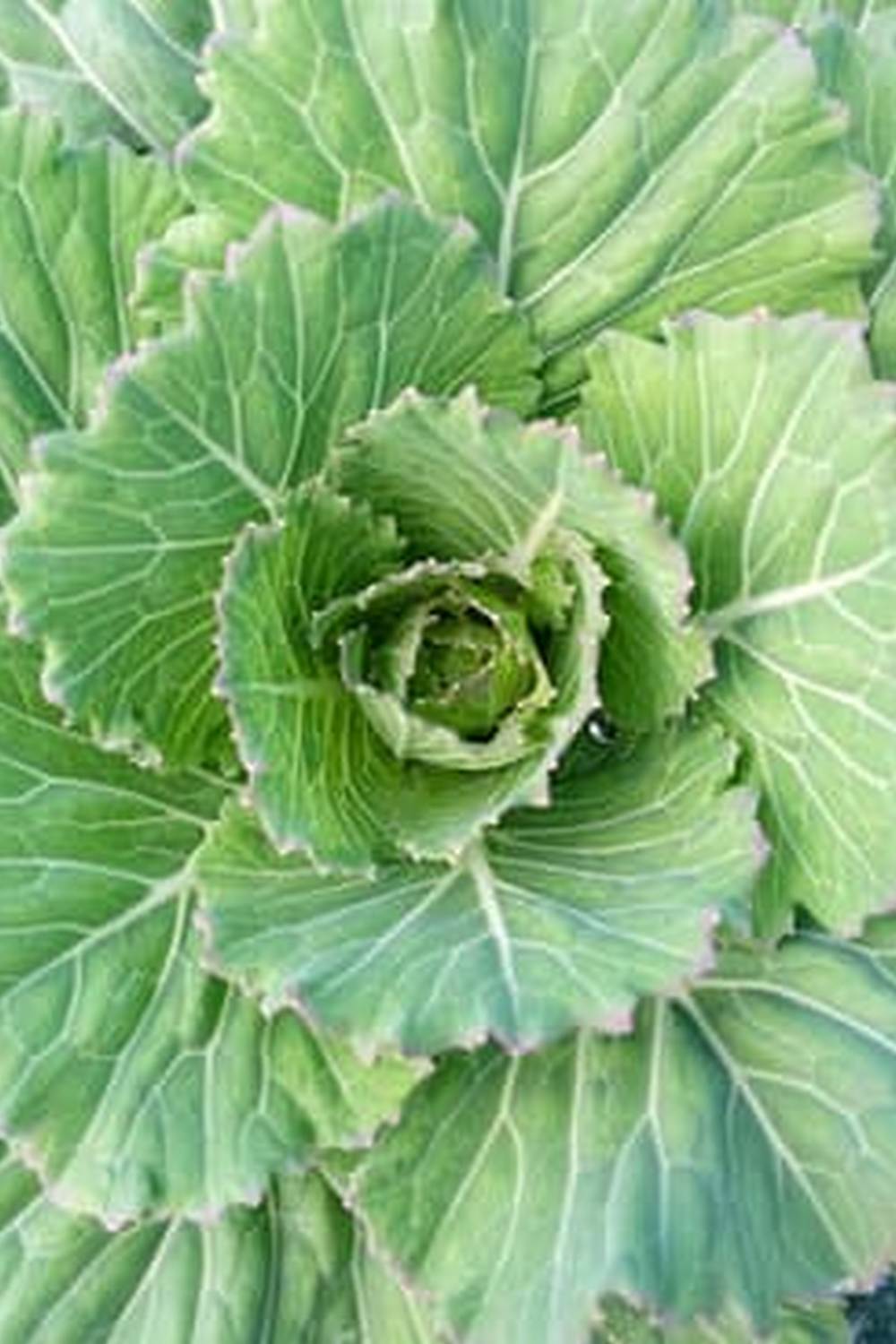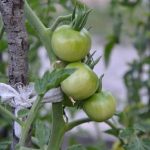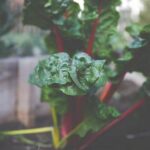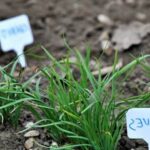Are you looking to add a unique and sustainable element to your vegetable garden? Wine barrel gardening vegetables offer an innovative and stylish approach to growing your own produce. By repurposing wine barrels, you can create a beautiful and functional garden that adds a touch of rustic charm to your outdoor space. This article will explore the concept of wine barrel gardening for growing vegetables, as well as the benefits and advantages of using this method for your gardening needs.
Wine barrels are not only aesthetically pleasing but also practical for creating a vegetable garden. Their size and shape make them ideal for planting a variety of vegetables, and their natural wooden construction provides good insulation for plant roots.
Additionally, wine barrels allow for better drainage than traditional planters, which is essential for successful vegetable gardening. Whether you have limited space or simply want to add a unique touch to your garden, wine barrel gardening can be a great option for growing your favorite vegetables.
In this section, we will discuss how to select the right wine barrel for your vegetable garden and provide tips on ensuring proper drainage and ventilation. We will also explore the step-by-step process of preparing a wine barrel for planting vegetables, including cleaning, sanitizing, and adding necessary soil and fertilizer for optimal growth.
Whether you are new to gardening or looking to try something different, wine barrel gardening offers an exciting opportunity to cultivate fresh and flavorful vegetables in a creative way.
Selecting the Right Wine Barrel for Your Vegetable Garden
When it comes to wine barrel gardening vegetables, choosing the right wine barrel is crucial for the success of your vegetable garden. Here are some tips on selecting the right size and type of wine barrel for growing vegetables:
– Size Matters: Consider the size of the vegetables you want to grow when selecting a wine barrel. Larger vegetables such as tomatoes and peppers will require a larger barrel, while smaller ones like lettuce and herbs can thrive in smaller barrels.
– Material: Opt for wine barrels made from natural wood such as oak or cedar, as these materials are durable and provide good insulation for plant roots.
– Consider Drainage and Ventilation: Ensure that the wine barrel has adequate drainage holes at the bottom to prevent waterlogging, which can lead to root rot. Additionally, look for barrels with ventilation options such as staves or gaps between the wood to promote air circulation.
Properly preparing your wine barrel for planting is essential for creating an optimal environment for vegetable growth. Here’s a step-by-step guide on how to do so:
1. Clean and Sanitize: Thoroughly clean the inside and outside of the wine barrel using a mild soap and water. You can also use a diluted bleach solution to sanitize the barrel before planting.
2. Add Potting Mix: Fill the bottom of the barrel with a layer of gravel or rocks to improve drainage. Then, add a high-quality potting mix specifically formulated for vegetables, ensuring it’s evenly distributed within the barrel.
3. Incorporate Fertilizer: Mix in a slow-release organic fertilizer into the potting mix before planting your vegetables to provide essential nutrients for healthy growth.
By following these steps and considering these tips, you can ensure that your wine barrel is well-prepared and suitable for growing a variety of delicious and nutritious vegetables.
Preparing the Wine Barrel for Planting
Step-by-Step Guide to Preparing a Wine Barrel
Before planting any vegetables in a wine barrel, it is important to properly prepare the barrel to ensure optimal growing conditions. Start by cleaning the interior and exterior of the barrel with water and mild soap to remove any dirt, debris, or residues.
Next, sanitize the barrel using a mixture of one part bleach to nine parts water, rinsing thoroughly afterwards to remove any remaining traces of bleach. This will help prevent the growth of harmful bacteria or fungi that could affect your vegetable plants.
Once the wine barrel is clean and sanitized, it’s time to add soil and fertilizer. Use a high-quality potting mix that is designed for container gardening, as this will provide excellent drainage and aeration for your vegetable plants. Additionally, consider adding a slow-release organic fertilizer to provide essential nutrients for your vegetables throughout their growing season.
Tips for Ensuring Proper Drainage and Ventilation
Proper drainage and ventilation are crucial factors in successful wine barrel gardening vegetables. To promote drainage, start by placing a layer of small rocks or gravel at the bottom of the barrel before adding the potting mix. This will prevent water from pooling at the bottom and causing root rot in your vegetable plants.
In terms of ventilation, it’s important to ensure that there are adequate holes in the bottom of the wine barrel to allow excess water to escape. Without proper ventilation, your vegetable plants may suffer from root suffocation and poor growth. Consider drilling several evenly spaced holes in the bottom of the barrel to facilitate good air circulation and prevent waterlogging.
By following these steps and tips for preparing a wine barrel for planting vegetables, you can create an ideal environment for growing healthy and thriving crops in limited space.
Final Considerations
Before moving on to planting your chosen vegetables in the wine barrels, make sure you have selected an appropriate location that receives adequate sunlight for optimal growth. Additionally, consider placing a layer of mulch on top of the soil once your vegetables are planted – this will help retain moisture and suppress weed growth while providing insulation for your plant roots.
With proper preparation and attention to detail, you can look forward to bountiful harvests from your wine barrel garden throughout the growing season.
Best Vegetables to Grow in Wine Barrels
Wine barrel gardening is a unique and innovative way to grow a variety of vegetables in a small space. The use of wine barrels as planters for vegetables has gained popularity due to their portability, aesthetics, and ability to provide good drainage for plants. When it comes to selecting the right vegetables to grow in wine barrels, there are several options that thrive in this type of environment.
One of the best vegetables to grow in wine barrels is tomatoes. Tomatoes are well-suited for container gardening and can be easily grown in wine barrels with proper support for the vines. Additionally, peppers such as bell peppers and chili peppers also do well in wine barrels, as they require well-draining soil and warm temperatures to thrive.
Leafy greens like lettuce and kale are excellent choices for wine barrel gardening. These vegetables don’t have deep roots, making them suitable for the confined space of a wine barrel. Herbs like basil, thyme, rosemary, and cilantro also flourish in wine barrels, providing a convenient source of fresh flavors for cooking.
When it comes to planting these vegetables in wine barrels, it’s important to ensure that they receive adequate sunlight and regular watering. Proper spacing between plants is also crucial to prevent overcrowding and competition for nutrients. With the right care and attention, growing vegetables in wine barrels can be a rewarding experience that yields an abundant harvest.
| Vegetable | Growth Characteristics |
|---|---|
| Tomatoes | Easily grown with proper support for vines |
| Peppers | Require well-draining soil and warm temperatures |
| Lettuce & Kale | Don’t have deep roots, suitable for confined spaces |
| Herbs (Basil, Thyme, Rosemary, Cilantro) |
Caring for Your Wine Barrel Garden
When it comes to wine barrel gardening vegetables, proper care and maintenance are essential for a successful harvest. One of the key aspects of caring for your wine barrel garden is regular watering. Since wine barrels have limited space and soil volume, it’s important to monitor the moisture levels closely to ensure that your vegetable plants are well-hydrated. Additionally, using a high-quality fertilizer is crucial for providing the necessary nutrients to support healthy plant growth.
In addition to watering and fertilizing, maintaining the health of your vegetable plants in wine barrels also involves monitoring for pests and diseases. Common pests such as aphids, slugs, and snails can pose a threat to your garden, so implementing pest control measures is important.
This can include using natural remedies or introducing beneficial insects to keep pest populations in check. Furthermore, keeping an eye out for signs of plant diseases such as powdery mildew or leaf spot is crucial for early intervention and preventing the spread of infections.
Another important aspect of caring for your wine barrel garden is ensuring proper ventilation and drainage. Good air circulation within the wine barrel is essential for preventing issues such as root rot, while effective drainage helps avoid waterlogging that can be detrimental to plant health. Regularly checking the condition of the soil and making any necessary adjustments to promote optimal growing conditions is key to maintaining a thriving vegetable garden in wine barrels.
| Caring Tips | Benefits |
|---|---|
| Regular watering | Ensures proper hydration for vegetable plants |
| Pest control | Prevents damage from common garden pests |
| Ventilation & drainage | Helps maintain optimal growing conditions |
Harvesting and Enjoying Your Wine Barrel Grown Vegetables
After patiently tending to your wine barrel garden and watching your vegetables grow, it’s finally time to reap the rewards. Harvesting and enjoying the fruits of your labor is one of the most satisfying aspects of wine barrel gardening. By following a few simple guidelines, you can ensure a bountiful harvest and savor the delicious taste of freshly grown vegetables.
When to Harvest
Knowing when to harvest your vegetables is crucial for optimal flavor and nutrition. Different vegetables have varying maturity times, so it’s important to familiarize yourself with each plant’s specific harvesting requirements. For example, tomatoes should be picked when they are fully colored and firm, while lettuce leaves can be harvested as soon as they reach a desirable size. Keep an eye on your plants and harvest them at the peak of ripeness to enjoy the best possible flavors.
Enjoying Your Harvest
Once you’ve harvested your wine barrel grown vegetables, it’s time to put them to use in delicious recipes and meals. From fresh salads with homegrown lettuce and herbs to savory pasta dishes featuring ripe tomatoes and peppers, the possibilities are endless. Experiment with different cooking techniques and flavor combinations to fully appreciate the taste of your homegrown produce. Sharing your harvest with friends and family is also a wonderful way to spread the joy of wine barrel gardening.
Preserving Your Bounty
If you find yourself with an abundance of harvested vegetables, consider preserving them for future use. You can freeze or can certain types of produce like green beans, peas, and peppers for long-term storage. Additionally, herbs can be dried or made into flavorful seasonings that will last throughout the year. By preserving your bounty, you can continue to enjoy the fruits of your wine barrel garden well beyond the growing season.
Creative Ideas for Wine Barrel Garden Design
When it comes to wine barrel gardening vegetables, the design of your garden can be just as important as the choice of vegetables you plant. The use of wine barrels not only adds a unique and rustic charm to your garden but also provides a practical way to grow your own produce. Here are some creative ideas for designing a stunning and functional wine barrel vegetable garden:
1. Vertical Garden Display: Stack multiple wine barrels of varying sizes on top of each other, creating a vertical garden display. This not only saves space but also creates an eye-catching feature in your outdoor space. You can plant different vegetables in each barrel, taking advantage of the height to maximize your growing area.
2. Colorful Arrangement: Paint your wine barrels in vibrant colors that complement the vegetables you plan to grow. This adds a pop of color to your garden and can be a fun way to add personality to your outdoor space. Consider matching the colors with the types of vegetables you are growing for a cohesive look.
3. Herb Spiral: Create a spiral pattern with multiple wine barrels, each containing different herbs or small vegetable plants. This design not only looks visually appealing but also helps optimize sunlight exposure for all plants. By planting herbs at different levels of the spiral, you can easily access them when cooking.
4. Hanging Garden: Utilize the top rims of the wine barrels by attaching hanging baskets filled with trailing vegetables such as cherry tomatoes or peas. This allows you to make use of vertical space while adding visual interest to your garden design.
5. Mix-and-Match Arrangement: Combine wine barrels with other types of containers such as clay pots, wooden crates, or metal buckets for a diverse and eclectic look. Mixing different textures and materials can create an interesting and dynamic garden design.
With these creative ideas, you can transform your wine barrel vegetable garden into an attractive and productive outdoor space that reflects your personal style while providing an abundant harvest of fresh produce.
Troubleshooting Common Issues in Wine Barrel Gardening
In conclusion, wine barrel gardening can be a fun and innovative way to grow delicious vegetables right in your own backyard. By following the tips and guidelines outlined in this article, you can set yourself up for success when it comes to choosing, preparing, and caring for your wine barrel garden.
From selecting the right size and type of wine barrel to learning about the best vegetables to grow in them, you now have a solid foundation for creating your own thriving vegetable garden.
When it comes to troubleshooting common issues in wine barrel gardening vegetables, it’s important to stay vigilant and proactive. Keep an eye out for signs of soil depletion, over-watering, or poor plant growth, and take the necessary steps to address these issues promptly. By maintaining proper drainage and ventilation in your wine barrels and staying on top of watering and fertilizing schedules, you can help prevent many common problems from occurring.
Ultimately, the reward of enjoying a bountiful harvest of fresh, homegrown vegetables from your wine barrel garden makes all the effort worthwhile. Whether you’re harvesting ripe tomatoes for a Caprese salad or plucking crisp lettuce for a refreshing summer salad, there’s something incredibly satisfying about reaping the fruits (and vegetables) of your labor.
So, roll up your sleeves, get creative with your wine barrel garden design, and get ready to savor the flavors of your very own vine-to-table experience.
Frequently Asked Questions
Can You Plant Vegetables in a Wine Barrel?
Yes, you can plant vegetables in a wine barrel. Wine barrels make excellent planters for vegetables due to their large size and ability to hold soil and nutrients effectively.
What Do You Put in the Bottom of a Wine Barrel Planter?
When using a wine barrel as a planter, it’s essential to put something at the bottom to aid drainage. This can include rocks, gravel, or broken clay pots to prevent waterlogging and promote healthy root growth for the vegetables.
What Vegetables Grow Best in Whiskey Barrel Planter?
Many vegetables grow well in whiskey barrel planters, including tomatoes, peppers, lettuce, spinach, kale, and herbs like basil and parsley. These plants thrive in the deep soil of the whiskey barrel and produce abundantly with proper care.

If you’re looking to get into vegetable gardening, or are just looking for some tips on how to make your current garden better, then you’ve come to the right place! My name is Ethel and I have been gardening for years. In this blog, I’m going to share with you some of my best tips on how to create a successful vegetable garden.





